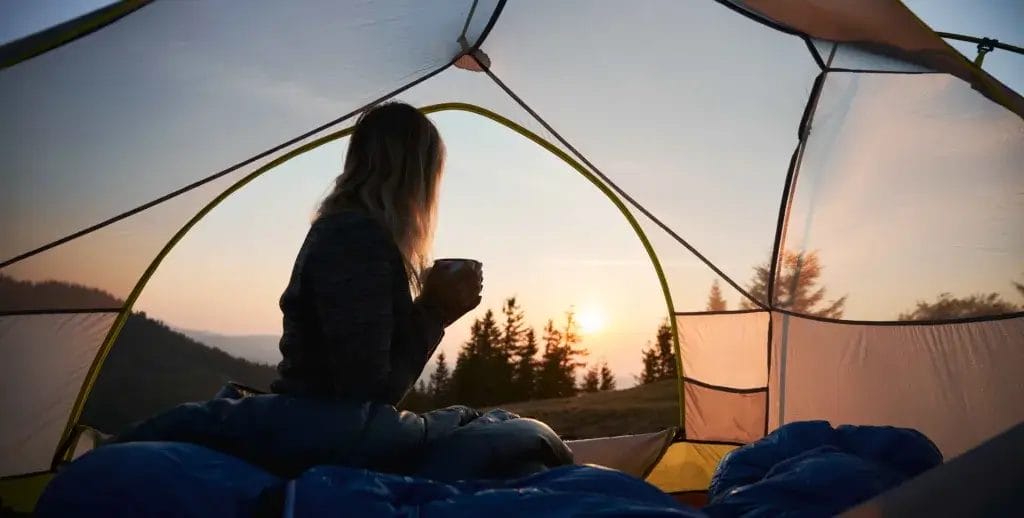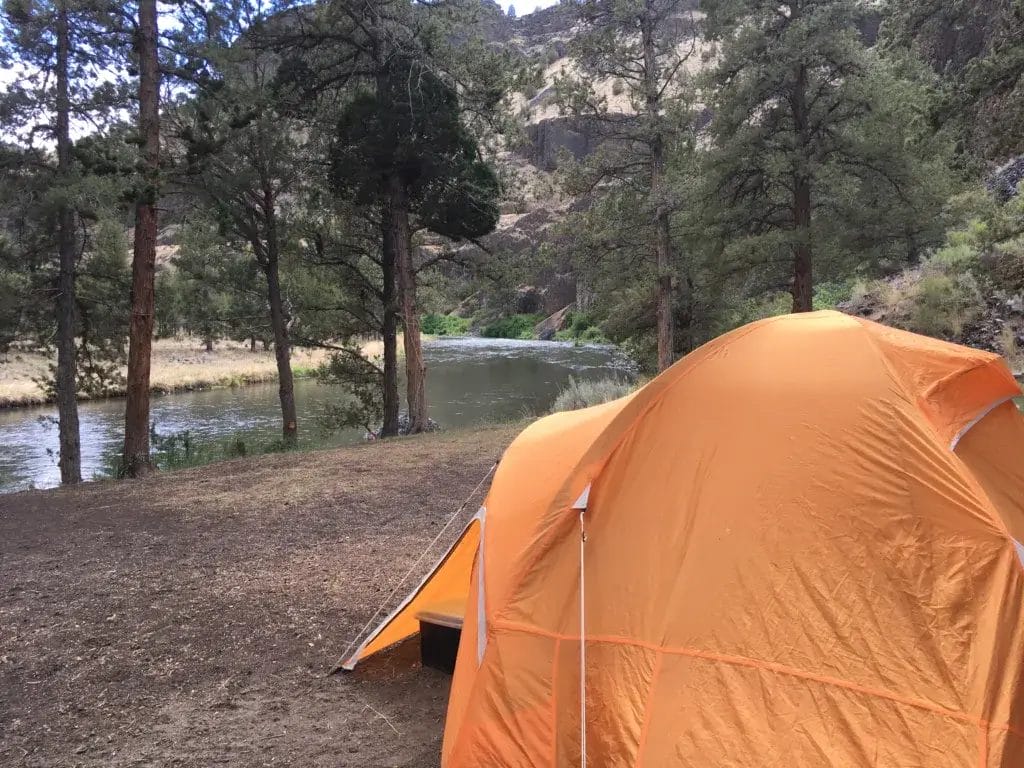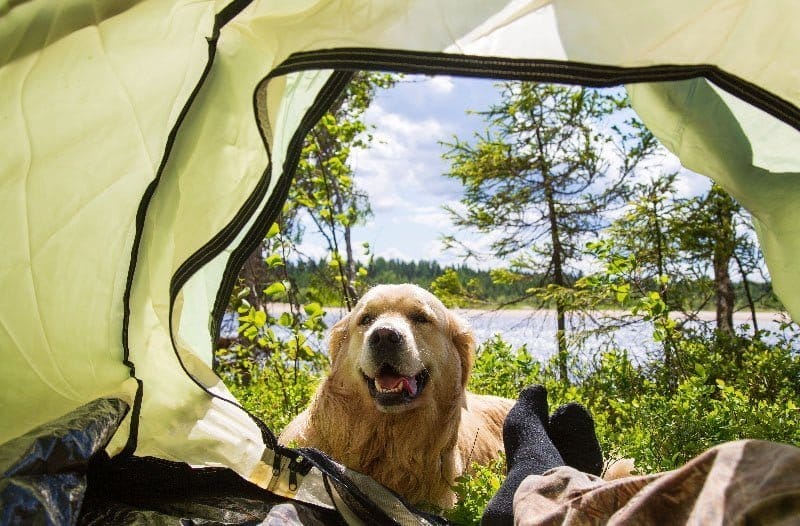How to Prevent Condensation in a Tent: Camp Cozy and Dry Every Time!
Nobody wants to wake up in a soggy sleeping bag with droplets falling from the tent ceiling. We’ve all been there—those mornings when our gear feels damp and everything takes forever to dry out.
We can prevent condensation in our tent by managing airflow, keeping wet items outside, and being thoughtful about where and how we set up camp.

It’s actually pretty simple to stay dry once we know what causes condensation and what steps really work. We can save ourselves from the hassle and discomfort of a wet tent, making our camping experience so much more enjoyable.
Let’s take a look at some easy strategies we can use to keep moisture under control and sleep soundly, no matter the weather.
Key Takeaways
- Pick the right tent spot and set up for better airflow
- Reduce moisture by keeping wet gear and extra water out
- Use simple tricks to maintain a dry, comfortable shelter
Understanding Condensation in Tents
Condensation in tents can be confusing and, honestly, a little frustrating. It helps to know how moisture forms, why it’s different from a leak, and what conditions make condensation more likely.
What Causes Moisture Buildup
When we spend the night inside our tents, the air we breathe out, the sweat from our bodies, and even wet gear all release moisture. As the air cools at night, this moisture collects on the inside of the tent walls, creating that damp feeling none of us enjoy.
If it’s rainy or we’re camping with several people, moisture builds up even faster. Cooking inside the tent or drying wet clothes raises humidity, which increases how much water vapor hangs in the air.
Sometimes, just being close to a river or lake means there’s more moisture in the environment. Even where we set up our tent can make a difference.
For example, camping under trees often helps because it keeps temperature changes gentle, which slows down how quickly water vapor condenses (learn more about location choices).
How Condensation Differs From Leaks
It’s pretty common for us to wonder if a wet sleeping bag is from rain leaking in or just condensation. Here’s how we tell: leaks usually leave water in specific spots, like near seams or where the rainfly touches the tent wall.
Condensation, on the other hand, shows up as a thin wet film, almost like fog on a bathroom mirror. We might notice droplets forming mostly at the top of our tent or running down the inside, instead of pooling near the floor.
If gear placed against the walls gets damp but there’s no puddle, that’s a sign it’s condensation, not a leaking tent. Keeping stuff away from the sides and making sure our fly and tent are set up right can help us avoid confusing the two (more tips here).
The Role of Dew Point and Humidity
The dew point is the temperature when water vapor in the air turns into liquid. When the temperature inside our tent drops to the dew point, condensation forms.
This happens most when the air is very humid or when there’s a big change in temperature between day and night. Humidity is higher inside the tent from breathing, cooking, or stashing wet clothes.
When we ventilate—like opening vents or doors—humid air gets replaced with drier air from outside. That helps keep the inside above the dew point, so less water forms on our walls.
Understanding dew point and humidity helps us know why sometimes our tent feels wetter, even though there’s no rain at all (details on how humidity affects condensation).
Why Preventing Condensation Matters

When we’re out camping, nothing puts a damper on our adventure like waking up to a damp sleeping bag and soggy gear. Tackling the condensation problem early makes a huge difference for comfort and keeps our trip running smoothly.
Improving Your Camping Experience
Let’s be honest—no one likes crawling into a wet sleeping bag after a long day. When condensation builds up inside our tent, it turns small annoyances into big frustrations.
Moisture clings to the walls and ceiling, drips onto our faces, and makes the floor slippery. That cold, clammy feeling can easily ruin what should be a relaxing night.
If we’re camping in colder weather, it gets even trickier. Damp air inside the tent feels much colder and makes it tough to stay warm.
Our clothes and gear might not dry out overnight, leaving us chilly and uncomfortable the next day. Keeping condensation under control helps us sleep better, stay warmer, and actually enjoy our downtime.
It’s a simple fix that saves us from a lot of headaches—especially if we remember to pitch our tent on dry ground, under trees, and give it plenty of fresh air by ventilating well.
Protecting Your Gear and Health
Moisture inside the tent doesn’t just mess with our comfort—it can actually damage our gear. Sleeping bags, mats, extra clothes, and electronics can all get damp if condensation is left unchecked.
Wet gear can grow mold, start to smell bad, or just become uncomfortable to use. If we’re dealing with moisture all night, it can even start to affect our health.
Prolonged exposure to wet conditions raises the risk of hypothermia and can make us more likely to get sick. Some folks might also find they get sniffles or allergies from moldy conditions inside the tent.
To avoid these problems, we should always take steps like hanging wet clothes outside, using a ground tarp, and making sure we don’t cook in the tent. Small habits keep our sleeping space dry and help us dodge those annoying and unhealthy side effects from unwanted tent condensation.
Choosing the Right Tent

Finding the best tent can make a huge difference when it comes to staying dry and comfortable at night. Features like built-in ventilation, breathable fabrics, and smart use of mesh all help cut down on that annoying inside dampness.
Modern Tents With Ventilation Features
Modern tents aren’t like the ones our parents camped in. These days, so many models come with special vents built right in—above the doors, at the roof, or even along the sides.
These are game-changers for airflow. When we look for a tent, we want adjustable vents that we can open or close, depending on the weather.
Some tents let us leave tiny gaps open even when it’s raining, which helps let out humid air but keeps water from coming in. If a tent advertises “double-wall construction” or “cross-ventilation,” that’s a good sign we’ll have less trouble with condensation.
It’s also much easier to find what we need now thanks to detailed product reviews from real campers, plus tips from websites like REI’s condensation guide.
The Role of Breathable Materials
The type of material our tent is made out of really matters. Some fabrics just hold on to moisture, while others help move it out before it has a chance to collect.
Tents that use materials like polyester and nylon, especially “silnylon” (nylon coated with silicone), tend to balance waterproofing with breathability. We need the outer fabric (the rainfly) to keep rain out, but we don’t want it to trap water vapor inside.
The tent body underneath should be breathable, letting moist air escape through the walls and out the vents. If we’ve ever used an all-plastic or cheap single-wall tent, we’ve probably woken up to wet gear and cold drips.
Upgrading to a tent that uses smart fabrics lets us avoid that soggy morning feeling. Mesh makes a world of difference.
Mesh Panels and Ventilation Points
Many tents today use large mesh panels on the ceiling, doors, and even parts of the walls. These let humid air flow up and out, especially when paired with a good rainfly design.
We’ve noticed that camping with a tent full of mesh panels helps with both comfort and temperature control. Even on buggy summer nights, we can zip up the mesh for airflow without letting critters in.
Multiple ventilation points work even better—if our tent lets us open vents on different sides, air can move all the way through. That cross-breeze really helps keep things fresh and dry, making mornings way more pleasant.
For more tips, check out these ways to manage condensation in a tent.
Optimizing Ventilation
Good airflow is our best friend when it comes to keeping a tent dry and comfortable. We can minimize condensation by using vents and adjusting how air moves through our space, along with smart placement of doors and windows.
Using Vents and Adjusting Airflow
Opening every vent our tent has is a game changer. Even on a chilly night, I’ve found that cracking open vents at the top lets warm, damp air escape instead of collecting on the inside walls.
Most tents have mesh panels or flaps designed just for this—let’s use them whenever possible. Some tents even come with vent struts, which prop open the rain fly a bit so air keeps moving.
When it feels muggy inside, we can unzip windows and vents on opposite sides for a cross-breeze. It might seem strange, but pitching the tent so wind can flow through—rather than blocking every draft—really helps.
If we notice beads of water forming, we should check that nothing is blocking airflow. It’s better to have a cool, dry tent than a warm, damp one.
For even more tips, the folks at MSR break down the importance of creating airflow.
Quick Ways to Boost Airflow
- Open vents, even partially, at night
- Unzip doors/windows a few inches
- Use mesh panels when privacy allows
- Angle rain fly openings with the wind
Proper Placement of Tent Doors and Windows
Where we put our doors and windows matters more than we think. If we place them on opposite sides of the tent, it encourages a steady flow of fresh air.
I’ve found that unzipping a window and the main entrance at the same time pulls stuffy air out, making our sleep space feel less clammy. Mesh panels in doors or windows are perfect for letting air in while keeping bugs out.
We should pay attention to the wind when setting up camp—if we face a door or window into a light breeze, it’ll help air circulate without letting in a strong draft. Camping in a spot with some natural shelter, like under a tree, means we can keep windows open even in light rain.
Sea to Summit shares that proper tent placement and door use are both simple and super effective ways to minimize condensation.
Managing Moisture Sources
Managing moisture in our tent means thinking about where it comes from. Ground moisture and wet gear can make a big difference in how much condensation we deal with during camping trips.
Staying aware of these sources helps us keep our space drier and more comfortable.
Reducing Ground Moisture
When we set up camp, one of the first things we should focus on is how to block moisture from the ground. Pitching our tent on higher ground keeps us away from puddles and soggy soil that can let water seep up through the floor.
Using a ground tarp or footprint is a simple trick—it puts a barrier between our tent and the wet earth, which can help keep things dry inside. It’s best to choose a spot under trees if possible.
Trees can help shield our tent from dew that settles on open ground at night. If our tarp sticks out beyond the edge of the tent, though, rainwater might pool under us, which is the last thing we want!
We should always tuck the tarp edges under, so they don’t collect extra water. If we notice moisture inside, checking the tent floor for holes or leaks and patching them right away is key to keeping things dry.
For more tips, check out advice from REI and Reddit camping tips.
Controlling Wet Gear Inside the Tent
Wet shoes, damp jackets, or even sweaty clothes can bring a lot of moisture into our tent. Once we zip the door, all that wetness stays trapped inside, adding to the humidity and causing more condensation to form overnight.
If it’s safe, we should try to leave wet gear just outside under the rain fly or in a little vestibule area. Bringing only dry clothes and gear inside cuts down on trapped moisture.
If we get stuck in a downpour, it helps to hang wet items on a line outside the tent or drape them over a branch before bedtime. Drying gear outside is so much better than waking up to damp sleeping bags.
It can be tempting to bring everything in for safekeeping, but the more stuff we let dry outside, the less condensation we’ll see when the sun comes up. Our friends at Sea to Summit have even more ideas on how to keep wet gear from messing up our cozy home away from home.
Using Tarps, Flys, and Ground Covers
Getting our setup right can really help us cut down on condensation in our tent. How we use tarps, flys, and ground covers can be the key difference between a damp, chilly night and sleeping dry and comfy.
With the right technique, we’ll keep the water outside where it belongs.
Setting Up a Waterproof Fly
A well-fitted waterproof fly acts as a shield between us and the elements. It keeps rain from creeping in and stops dew from soaking our tent in the early morning.
The trick is making sure our fly sits just above the tent, with enough space for air to move freely. Good airflow is crucial.
If we pitch the fly too close to the tent, the lack of ventilation can trap our own breath and sweat, turning it into condensation. Raising the fly just 4 inches above the ground—if possible—lets cool, drier air drift in and carry the moisture out.
This simple fix helps reduce condensation build-up even on chilly nights. When we use a fly, it’s also smart to leave at least one door or window cracked open.
Even a small gap means moisture has an escape route. Our tent stays much drier if we focus on both covering and ventilating.
Positioning a Tarp for Better Protection
Tarps are our backup superheroes. We can spread a ground tarp underneath the tent, or even fold it so it covers the whole area below us.
This barrier stops ground moisture from rising and mixing with the air inside the tent. It’s especially useful when we’re camping on wet grass or soggy soil, which easily pumps vapor up during the night.
For more coverage, we might string a tarp above our tent if we expect heavy rain. Setting it at an angle helps the water slide off instead of pooling on top.
By putting the tarp a little higher or wider than the tent, we get wind and water protection without making it stuffy inside. That way, moisture is less likely to collect on the inside of our shelter.
It’s best to avoid letting the tarp touch the sides of our tent. Any contact can let water sneak through, or even increase condensation in some cases.
We’ve found using a groundsheet and a pitched tarp is a solid combo when we want to sleep dry and stay comfortable.
Temperature and Weather Considerations

When we’re out camping, condensation often sneaks up because of shifting temperatures and the way moisture builds inside our tents. Understanding how temperature, humidity, and even the time of year affect our setup is the secret to waking up dry and comfortable.
Managing Inside Versus Outside Temperatures
One thing we learn fast is that the air inside our tent can be warmer and wetter than the air outside. That difference is what leads to moisture pooling on our tent walls at night.
The key? Let’s try to keep the inside air as close in temperature to the outside as possible. We can do this by choosing a higher campsite—heat rises, so spots a little higher off the valley floor are less likely to collect cold, damp air.
Camping under trees also helps, since the air near trees tends to be a bit warmer, lowering our risk of reaching the dew point inside the tent and creating condensation. Opening vents, doors, or windows (even just a crack) lets moist air escape and invites drier air in.
For more tips, check out how to manage tent condensation with smart campsite choices.
Quick ways to balance temperatures:
- Pitch on dry, higher ground
- Use all available vents
- Don’t dry wet clothes inside the tent
- Avoid tightly sealing the tent during sleep
Seasonal Tips for Minimizing Condensation
Each season brings its own challenges for fighting humidity in our tents. In spring and fall, big temperature swings between day and night can make condensation problems worse, especially if rain or morning dew is in the forecast.
We’ll want to pay extra attention to airflow during these months. Summer camping is usually easier—warmer nights mean less temperature difference and drier air.
Winter, though, is a different story. Our breath, wet gear, and cold air outside make it tough to prevent water buildup.
Double-wall tents shine here: the inner wall lets moisture slip through, while the outer keeps rain and snow out. No matter the season, airflow is our best friend.
Keeping vents open, even just a little, helps cut down on moisture and lowers the dew point inside the tent. We can read more about avoiding tent condensation in changing weather to stay prepared whenever we plan a trip.
Extra Tips for a Condensation-Free Night

Keeping our tent dry isn’t only about comfort—it also means better insulation and less gear maintenance. If we take small steps before we turn in, we can wake up drier, warmer, and ready for whatever the day brings.
Insulation Tips for Campers
Insulation isn’t just about a cozy sleeping bag. It’s about making smart calls with all the gear we bring.
We’ve found that using sleeping pads adds a layer between us and the cold ground. That extra padding helps cut down on condensation inside the tent.
When we pick a campsite, choosing slightly higher ground really helps. Since heat rises, camping up a bit can balance the temperature inside and outside the tent.
This trick alone cuts down on how much water builds up overnight. We also try not to pitch our tents too close to water, since that just adds more humidity to the air.
Layering clothes at night keeps us warm and stops sweat from soaking our stuff. It’s smart to stash damp clothes outside the sleeping area, because extra moisture just leads to more condensation.
Unpacking and Drying Out Gear
Let’s be honest—wet gear can ruin a night in the tent. As soon as we get to camp, it’s best to unpack as much as we can.
We hang up wet jackets, socks, and boots right away. That way, everything dries faster and we keep extra water out of our sleeping space.
If it’s raining, we use the tent vestibule to stash damp items. Keeping them out of the sleeping area helps keep condensation at bay.
We try not to dry wet stuff inside the tent, since that just adds to the moisture problem. It’s tempting, but not worth it.
We’ll lay out a small towel or rag to catch drips or wipe down damp spots. Even a quick wipe before bed helps keep condensation under control.
Frequently Asked Questions

Keeping our tent dry means thinking about ventilation. Smart gear choices and using the right tools help too.
What tricks can I use to keep my tent dry from dew during camping trips?
We’ve learned that pitching the tent in the shade of a tree helps. It keeps temperature changes gentle and reduces morning dew inside.
Opening up vents and doors lets moisture escape. That way, air flows better and we don’t wake up to damp walls.
It’s a good idea to keep wet gear outside the sleeping area. We also make sure the rain fly is taut, so water can’t seep through and cause extra dampness.
Setting up camp a bit away from lakes or rivers helps keep dew from collecting inside.
Are there any effective tent dehumidifiers for combating moisture build-up?
Small tent dehumidifiers, like silica gel packs or single-use moisture absorber bags, can help a bit. We’ve tucked them into tent corners and noticed they pull some of the excess dampness out of the air.
They’re not magic, though. They work best with good airflow and regular gear checks, not as our only defense.
Any tips on how to stay condensation-free when camping in cold weather?
Venting is really important when it’s cold. Cracking open a zipper or two at the top of the tent helps, even if it feels chilly for a minute.
We keep wet clothes and boots outside the living space to avoid trapping moisture indoors. Camping on higher ground keeps our tent away from pooled cold air and extra ground moisture.
Opening the fly or at least leaving the top unzipped is especially helpful, even on frosty nights. Campers talk about this all the time in this Reddit discussion.
Could moisture absorbers be the secret to a dry tent environment at night?
They’re helpful, but they’re just one piece of the puzzle. Moisture absorbers like silica gel or calcium chloride packs work best for smaller, mostly sealed tents.
We’ve stashed a few at the tent corners during muggy weather. They soak up some moisture, but honestly, we still rely on good airflow and smart camping habits most of all.
What are the best practices for maintaining a dry tent while camping overnight?
We always keep ventilation in mind—doors, windows, and vents let humid air out. When possible, we dry wet clothes and gear outside so we don’t add more moisture to the air.
Setting up our tent on higher ground, well away from streams or lakes, helps a lot, as Sea to Summit suggests. Unzipping the rainfly a bit on clear nights is another trick that makes a real difference.
How can I manage to keep our tent cozy and dry on winter camping adventures?
We try to stay warm but also let in some fresh air. Even cracking a vent just a bit can stop that annoying icy drip inside the tent.
We rely on insulating sleeping pads and stash our gear in dry bags. Setting up camp away from soggy low spots—and giving ourselves room to move—makes things feel a lot more inviting and dry, even when winter’s throwing its worst at us.








